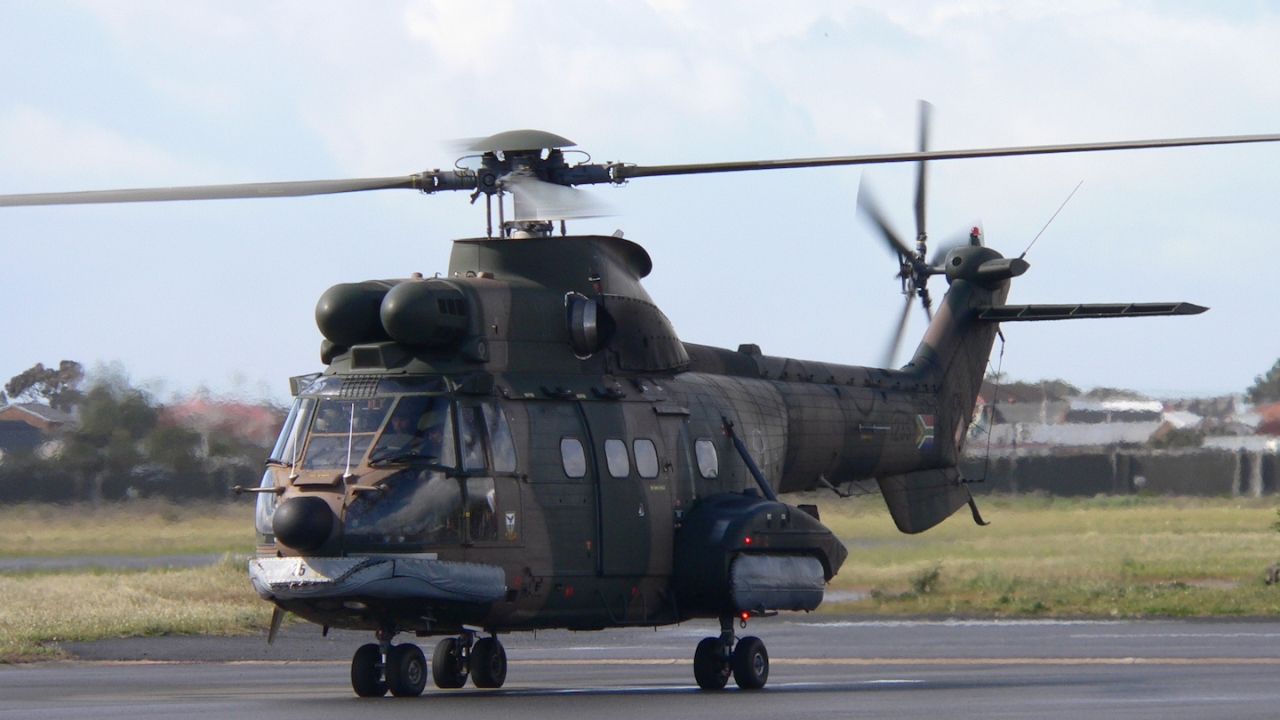Lifeline for the SAAF?
A new support contract for its Gripen fighters may prove the catalyst that kick-starts the rebuilding of South Africa's air combat capability.

Only seven of the SAAF’s 39 Denel Oryx support helicopters are operational. PICTURE: David Oliver
Once Africa’s best equipped and most capable air force, the South African Air Force (SAAF) has been in terminal decline for the last two decades with most of its aircraft non operational. Its priority is to arrest the decline of its critical capabilities and equipment, but a lack of funding is constraining its ability to meet performance targets. In October 2023, a government spokesperson confirmed that 85 per cent of the SAAF fleet was “currently out of action”.
South Africa was the first export customer for the Saab Gripen when it ordered 26 JAS-39C/D aircraft in 1999. A new support contract is being negotiated for its Gripen fleet, which have been grounded for more than a year, and which may begin the process to rebuilt its air combat capability.
The entire Gripen fleet was grounded in August 2021 after budget cuts and contractual problems left the SAAF without a maintenance contract. A limited new airframe maintenance contract with Saab went into effect in September 2022 and after negotiations between the South Africa’s military procurement agency and Saab and GKN, a compromise was reached. However, the resulting three-year contract only supports 13 of the total Gripen fleet. By the end of 2023 only two out of 26 Gripens and three of 24 Hawk Mk.120 advanced trainers were airworthy. Qualified Gripen and Hawk pilots numbered 41, all based at AFB Makhado with Number One Squadron, few of which get the opportunity to fly their aircraft on a regular basis.
There is a similar situation for both the SAAF’s helicopter and transport assets. Of the 11 airframes in the Denel Rooivalk attack helicopter fleet, only four were serviceable by mid-2023, with seven either unserviceable or undergoing maintenance. Of the 23 engines in the fleet, only 13 were serviceable. The situation with the Atlas Oryx support helicopters was no better with only seven out of 39 being operational while 13 were at Denel’s state-owned servicing centre, and the remaining fleet were at squadrons awaiting servicing. Three Rooivalks and two of the five Oryx helicopters that support South Africa’s mission to MONUSCO in the Democratic Republic of the Congo (DRC) were grounded in 2023 as were one of the only two Oryxs deployed to the Southern African Development Community Mission in Mozambique (SAMIM) Mozambique. The Rooivalks were in the midst of a 15-year overhaul of engine and transmission systems, but government officials said there was insufficient funding to do anything more than overhaul four engines.
In October 2023, South Africa’s defense minister Thandi Modise said only five of 39 Oryx were functional and R2.5 billion ($0.13 billion) was needed to restore the fleet. She added that three of 11 Rooivalk could fly “with restrictions,” and that the helicopters’ avionics systems were obsolete. Denel Aeronautics has claimed that it has not been paid by the SAAF for further Oryx and Rooivalk maintenance work.
To add to the problem, In February 2024 an Oryx medium transport helicopter was hit by small arms fire while carrying out a casualty evacuation in the DRC injuring two of the crew.
A SAAF Casa C-212 Aviocar light transport aircraft was damaged in a landing accident while taking part in Exercise Vuk’uhlome in 2023. Its No 44 Squadron only had one of three C212s serviceable prior to the accident although in September, Armscor reported that a maintenance contract with Airbus was in progress to make the fleet serviceable.
Only two of it five Lockheed Martin C-130BZ Hercules transports are airworthy, while the whole fleet of nine Cessna 208 Caravan light transport are al non-operational,
In reply to questions by opposition politicians, defence minister Modise said: “The chief of the SAAF recently approved a seven-year medium term strategic framework plus plan 2030 with an end-state of an organisation that is affordable, sustainable and responsive.
“This plan seeks to ensure prime mission equipment (PME) will be held at the minimum level of capability maturity required with provision to optimise as and when the threat scenario changes.
“Plan 2030 Focus in so far as PME is concerned is the rejuvenation of core capabilities by means of essential life extensions, mid-life upgrades, and disposal management in order to reduce baseline costs.”
Stay up to date
Subscribe to the free Times Aerospace newsletter and receive the latest content every week. We'll never share your email address.

